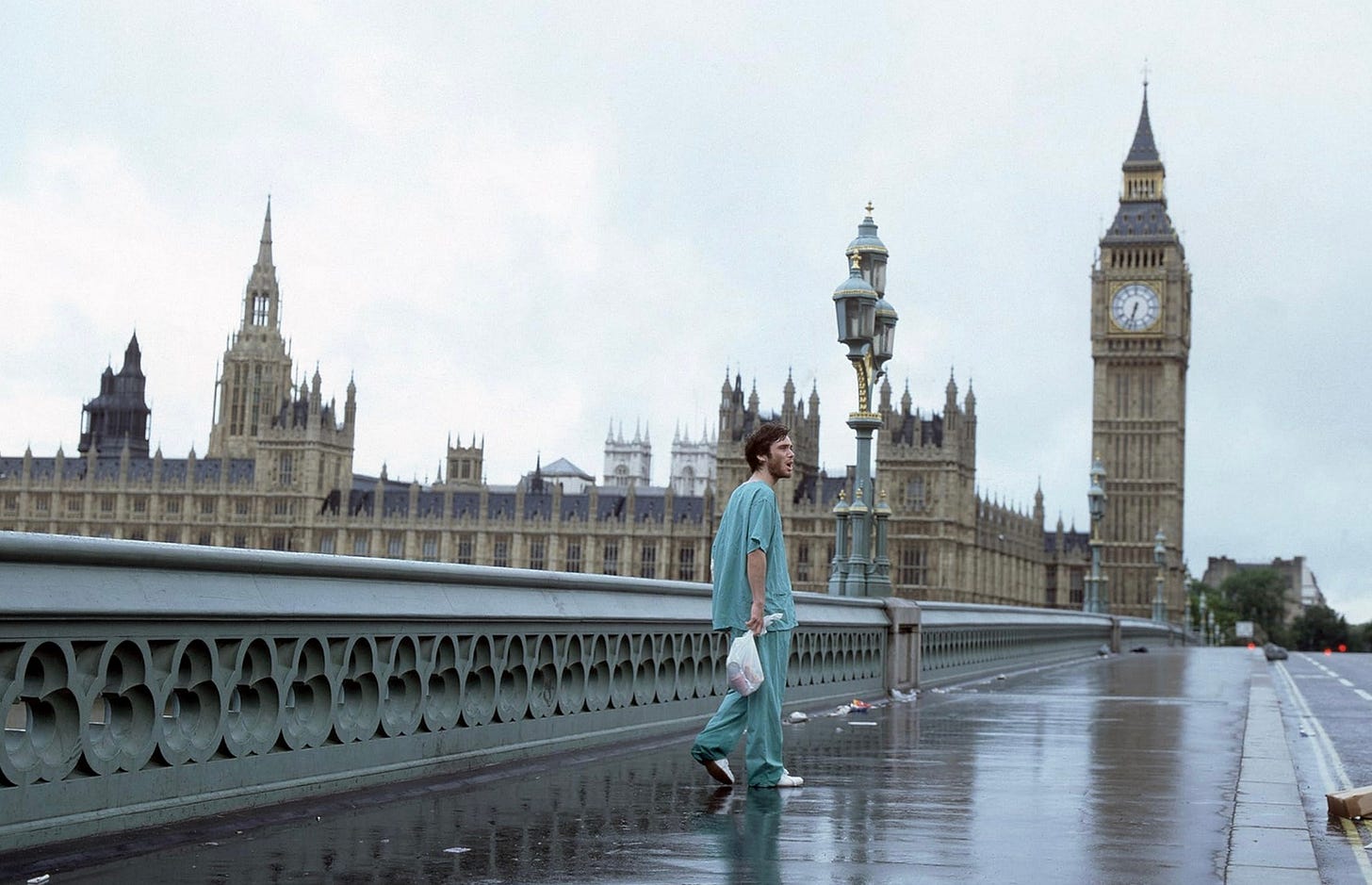Retrospective: "28 Days Later" (2002)
28 Days Later challenges us to fear not the end of civilization, but its aftermath.
I watched 28 Days Later (2002) when it premiered 22 years ago. I remember it vividly: My best friend and me sat in a pitch-black, empty room at our local rundown theater, two horror geeks about to be scared shitless.
It was the rare cinematic experience that lingers in the pits of your mind. The movie opens with a bang: A group of animal rights activists frees a chimpanzee infected with the "rage virus." The chimpanzee attacks the activists, and moments later, the virus breaks out of the facility, rapidly spreading throughout the population.
Though technically not zombies, the infected humans behave in a similar fashion, lurching, spewing blood and fluids, and spreading disease through contact. They also seem unusually alert and agile, a then-novel twist on zombie lore.
Conceptually, Civil War (2024) reminded me of 28 Days Later. Both films, written by Alex Garland, who also directed the former, grapple with the societal implications of a catastrophic event.
While 28 Days Later unfolds in a barren Britain devastated by the accidental release of a highly contagious virus, Civil War explores a fractured United States torn apart by political strife. Both films approach their version of the apocalypse through a hyper-realistic visual style, marked by the liberal use of handheld cameras.
The resulting cinematic experiences feel like they were carved out of the same melancholic mold. However, thematically and in terms of execution, 28 Days Later hits harder.
As terrifying (and frankly exhilarating) as hordes of rabid and surprisingly athletic "zombies" are, the film remains a masterclass of horror because it exploits a far more primal fear: being alone. Deserted streets, burnt vehicles, mountains of garbage, and dilapidated buildings serve as haunting reminders that, even if the virus doesn’t kill us, isolation might.
The profound sense of dread and remoteness that permeates the narrative is reinforced by the use of DV cameras to capture certain sequences. The resulting graininess gives the movie the feel of an archival video, stitched together from multiple sources. Plus, there’ll always be something eerily familiar about civilizational collapse following the spread of a deadly virus.
Civil War lacks this type of raw emotional center. It’s a cool concept that unfolds like a series of bullet points, inadvertently creating an almost unbridgeable distance between the main conflict and the audience. Read my capsule review here.
The reason why 28 Days Later resonates with me while Civil War falls short might come down to my first impression. In my mind, the film still inhabits that gloomy and neglected auditorium, where my friend and I would cover our faces, anticipating a scary scene.
28 Days Later challenges us to fear not the end of civilization, but its aftermath. It maintains a rudimentary, almost primitive aspect that makes it feel perpetually real and distressing.
28 Days Later is notoriously difficult to find on streaming. It’s not currently available to watch anywhere.









Nice read; I've actually never seen 28 days later (I know, SMH); feels like a good double feature.